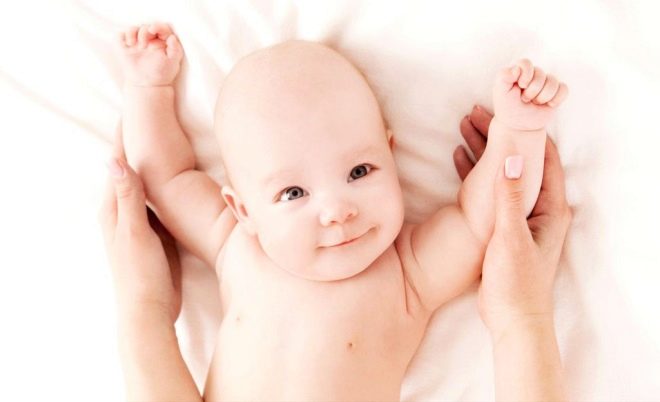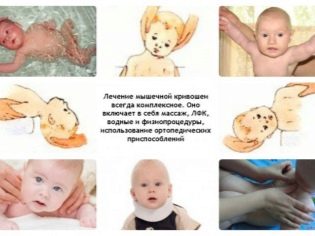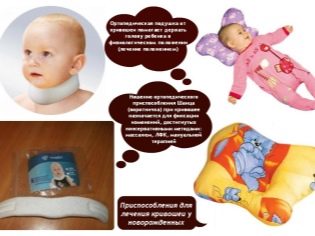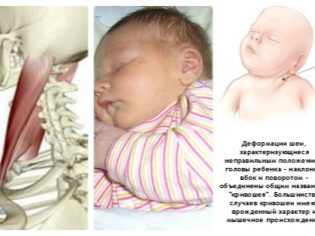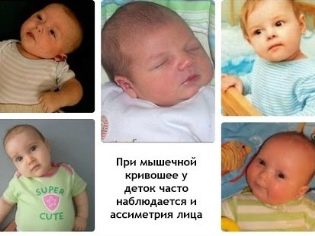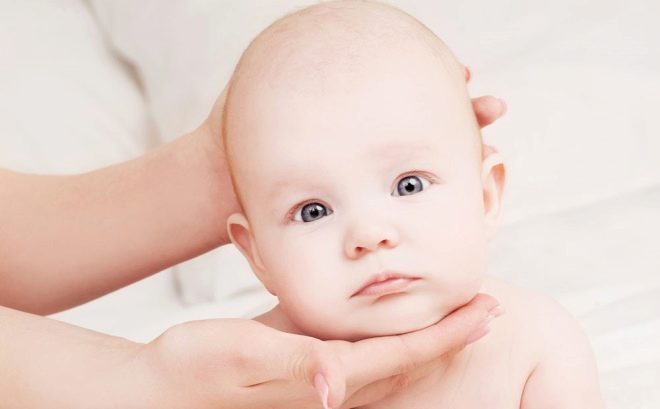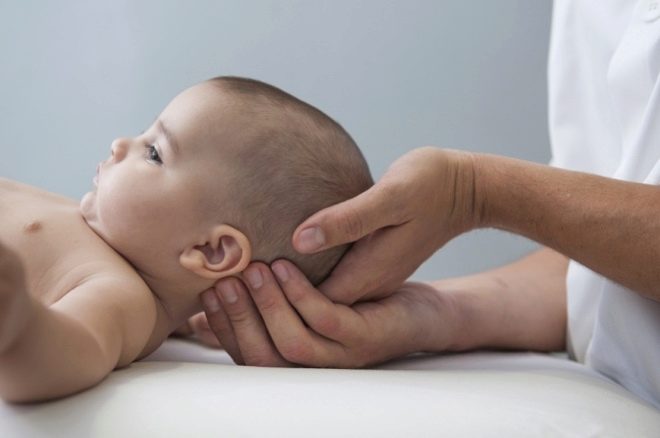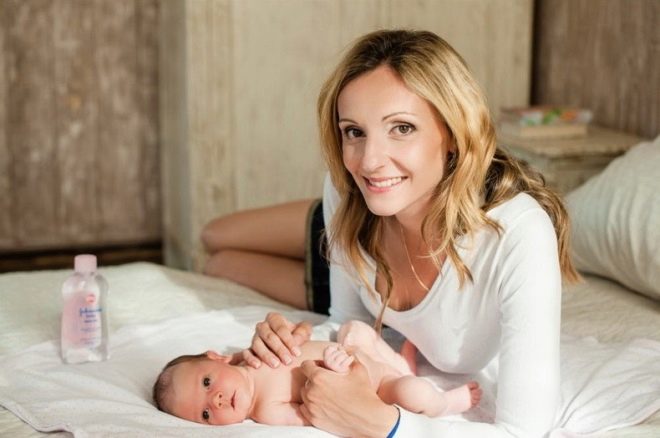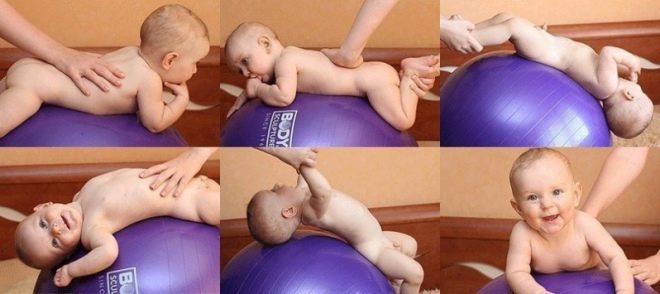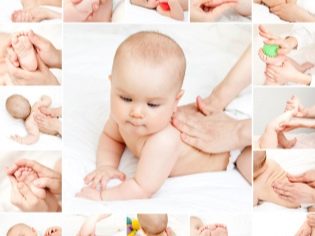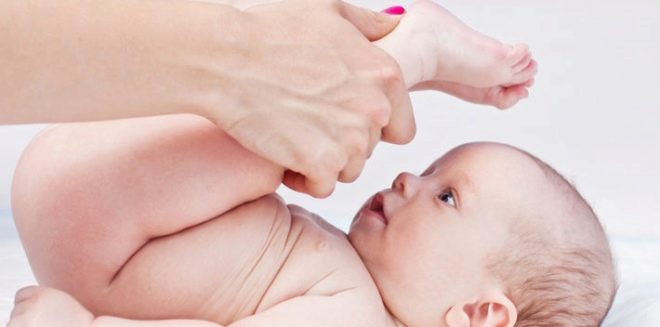Massage with distortion in babies
Krivosheya in newborns - a fairly common phenomenon. About 10-12% of babies suffer from it, and this usually worries parents greatly. However, this is the case when timely treatment allows you to completely correct the problem, and the lack of treatment can lead to serious consequences. Krivosheya itself does not pass. The basis of the treatment of this condition is massage. Is it possible to do it at home, what technique and methods of exposure, we will tell in this article.
How does torticollis manifest?
Krivosheya can have different reasons, but its manifestations, as a rule, are very similar - the child's head tilts with simultaneous opposite rotation. The curved neck may be due to certain pathologies of the bones of the cervical spine, due to the pathologies of the nerves in this section, and the muscular torticollis is also widespread.
In infants, the pathology may be congenital or acquired, for example, during heavy labor. If you do nothing at all, hoping for self-treatment, complications can be very severe: deformations of the facial bones, skull, spine, severe neurological anomalies and decrease in intellectual abilities, memory, deterioration of speech functions in the future, respiratory failure are possible.
Since the reasons may be different, you first need to identify the true one — the tactics of treating the child will depend on it. Therapy can be both surgical and conservative. Usually begin with a conservative treatment, which includes:
- massage;
- electrophoresis;
- UHF;
- Special therapeutic exercises.
If this treatment does not help within six months, a decision may be made to conduct the operation.
In the vast majority of infants, torticollis is associated with abnormalities in the development of the sternocleidomastoid muscle. It begins behind the ear and descends to the clavicle.
A child with torticollis usually turns its head in one direction only - opposite to that in which there is a defeat. If you look at the back of the baby, one shoulder from the side of the lesion will be higher than the other, and its winged protrusion may also be noticeable.
When a kid with torticollis sleeps, he, as a rule, squeezes only one palm into a fist. If you touch the sore muscle, it will show a seal, which is shaped like a spindle. When trying to turn the baby's head to the other side, the baby resists.
The diagnosis is established on the basis of inspection and the conclusion of radiography.
Do I need a massage?
Massage is necessary, but the decision to conduct it should be made by the doctor, not by the mother herself. The fact is that massage is needed not ordinary, general, but medical, so you will definitely need the help of a professional massage therapist, a physiotherapy specialist for babies and a physiotherapist.
Massage for the child will not be 100% pleasant, parents should get ready for the fact that massaging will be associated with certain painful sensations. However, over time, the baby will get used, and the pain will be significantly reduced. The task of the massage course in this pathology is the normalization of the tone of the muscles of the neck, the occipital muscles and the muscular system of the shoulder girdle. If we are talking about neurogenic distortions, we cannot do without the help of a neurologist.
If the reason is the pathology of the vertebrae, you need to consult a surgeon, a vertebrologist.
The massage improves blood circulation in the neck muscles, removes the “clips” and blocks that prevent the normal functioning of the muscle tissue from the affected side. The masseur stretches the affected muscle, stimulates the nerve endings. Gradually, the amplitude of movements and functionality expands, torticollis is corrected, muscles and vertebrae occupy their natural position.
Self massage - is it possible?
Massage courses will take a lot (treatment lasts from six months to a year). Each session is expensive. The required amount may not be found in every Russian family. Theoretically, such a massage is almost impossible to do on your own: only a specialist who knows the anatomy and physiology of an infant should perform therapeutic massage.
However, in practice, massage is possible provided that the mother asks a good specialist to teach her the basic techniques, and for the first few sessions she will personally perform the massage under the supervision of a medical specialist. Do not think that masseurs carefully keep their secrets. Many doctors are happy to show and tell the rules of this massage to parents.
Therefore, several sessions or even a whole course will still have to be paid in order to visit a professional as much as mom needs in order to remember the sequence of actions and the rules of massaging. Unskilled unauthorized actions can only harm the child.
If the initial training is completed, the attending physician may well allow home-made baby massage, but the mother should try very hard to earn his trust.
What is needed?
To perform the procedure at home, you will need to choose the place where the massage will be performed. Beds and other soft surfaces are immediately excluded. The child must lie so that his spinal column is in a level position, does not “fall through” and does not “sag”. Changing or regular dining tables are great for babies. You can massage on the dresser, if it is in the house. Cover the surface with a diaper.
To facilitate the glide of mom's hands, you should use vegetable oil, slightly warmed up, so as not to give the child discomfort. If there is a hypoallergenic massage tool, use it. You can also use traditional for such cases, children's cream.
If a child is already 3 months old, buy a fitball - a large gymnastic ball, which allows you to achieve a noticeable relaxation of the muscles of the neck and neck area.
Technique of
To make the baby massage properly, you should follow a certain pattern. Some massage therapists start the session from a position on the back, but most often the first starting position is a posture lying on its side.
- With the right-hand crooked, place the child on the left side, with the left-hand - on the right.
- Soften your hands with a means to facilitate slipping and begin slowly and gradually increasing the pace to stroke the affected part of the neck. When the muscle becomes warm, and the skin changes its color to rich pink due to blood flow, go to the rubbing. Do them without strong pressure, then movements will not cause the child pain.
- Turn the baby on the back. Take his head in your hands and slightly, very delicately turn to the center position - facing you. If movement is restricted, stop where there is a restriction. Lightly stroke the clavicular mastoid with the back of your hand and try again, at least a few millimeters, to turn the head straighter. If the child starts to worry, stop the exercise, you can always return to it later, insert it into any sequence of techniques.
- Turn the child on its side on the affected side (with right-sided crooked - on the right). Take the head of the baby in the palm of your hand, hold it, feel that the baby is relaxed, and release the palm.The natural compensatory movement of the muscles will be aimed at gradually setting the head to the correct position.
- Take turns from back to tummy. It is best to first turn 10 times through the healthy side, and then the same through the patient.
- Put the baby on the belly. Stroke and rub the back, avoiding a direct impact on the vertebrae. Carefully stroke the neck muscles in the back, neck fold and shoulders. When the skin becomes pink and warm, turn the head of the baby in the healthy direction and massage the cheek, and then turn the head in the affected side, as far as the pathology allows, massage the second cheek. Repeat such turns 8-10 times.
- Turn the baby on your back. Massage your arms and legs lightly, starting from your fingers in an upward direction, complete with light grindings of your chest and abdomen. Do this in a circular motion with your open hand.
- Additionally, you can put the child on fitball, holding the legs so that the butt crumbs were above the head. In this position, you need to lie down for about a minute on the back and the same on the tummy. This will effectively relax the muscles of the neck area.
After the massage, turn the head of the child to the maximum correct position (as far as the muscular limitation allows) and fix it with a Schantz collar.
Useful tips
Here are some helpful tips for your mom. self-effective treatment of torticollis in a child:
- visit your doctor every month to assess progress or lack thereof;
- a course of massage with such a pathology lasts from 14 to 20 sessions (one session per day), between courses a mandatory break is required - 1-1.5 months;
- Do not forget to massage and healthy side of the neck. Muscles on both sides should receive sufficient physical activity;
- make sure that the child sleeps on different sides: on the right in one rest period, on the left - in the next;
- the duration of one session is about 10 minutes, it is better to start from 2-3 minutes, gradually increasing the time;
- talk to the child, sing to him, read the poems, turn on the music, do everything so that the baby does not perceive the massage as an unpleasant and inevitable necessity, try to make him love these activities;
- If the muscle clamp is very strong, start a course of massage in warm water. Water temperature is 37 degrees Celsius. In the water, the child relaxes faster, this also applies to the affected muscle. It will be easier for you to stretch it, and it will give the child less discomfort;
- during the day, take the child correctly - wear it vertically so that the baby’s shoulders are approximately on the same level as your mother’s;
- be sure to spend every day therapeutic exercises recommended by the doctor individually, depending on the cause and the specific type of torticollis. If the massage is usually prescribed from the age of two months, then the gymnastic exercises from the exercise therapy complex - from 3-4 months.
Parents will need patience. There will be no quick results, especially in cases of congenital torticollis. But patient work, daily massage and gymnastics in most cases help to cope with the pathology.
For information on how to do a massage with a wry baby, see the next video.

